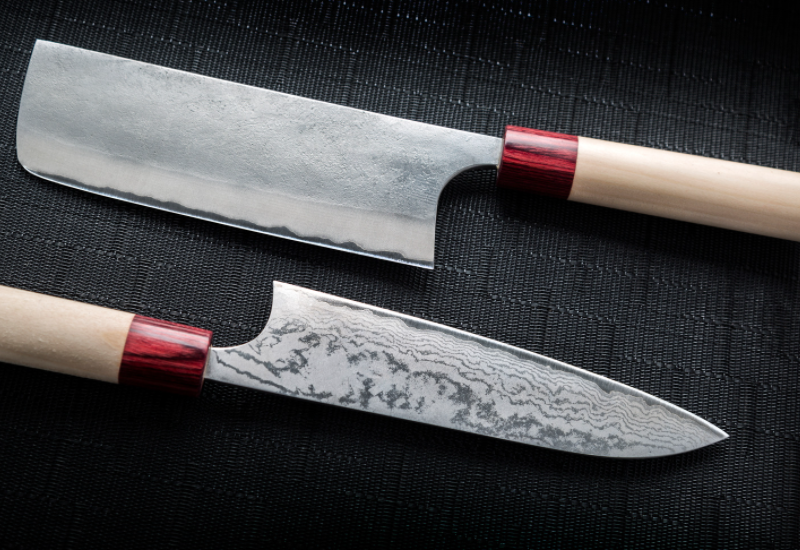Why Japanese Knives?
When it comes to cooking, it can’t be denied that a knife is probably one of the most essential tools needed in the kitchen. To perfectly slice through dense ingredients like bones, chop veggies like a pro, and dice carrots into desired cubes and blocks, a professional cutlery is needed to ensure all processes are going fine.
In Japanese culinary, though, a normal kitchen knife wouldn’t be enough to handle all the challenging tasks and the techniques of the blades passed on from generations to generations. As crafting Japanese delicacies will require the traditional techniques and skills mastered for years to perfectly slice, cut, chop, and mince various ingredient types, common kitchen knives will definitely break or become brittle in the second or third attempts. Thus, a special kind of knife is required to aid head chefs and culinary experts when it comes to the crafting of Japanese delicacies like sushi and sashimi.
Japanese knives are different from the common, general kitchen knives out there. Japanese knives are not only made in Japan, a country home to excellent, superb-quality culinary equipment and cutleries, but they are forged with extremely hard steel types through traditional, yet innovative blade-forging techniques. There are a wide variety of Japanese knife types unlike the typical knives we know of, forged just to cook and prepare ingredients without special features users can access.
Japanese knives are available in so many kinds, ranging from the general, multi-tasking ones like Santoku and Gyuto to the specific-task oriented knife types like Sujihiki (slicer knife) and Usuba or Nakiri (vegetable) knives. Each knife type will come in different sizes, lengths, shapes, and designs as they are crafted to help different tasks in food preparation. Some knives will Japanese knives are made with inspiration being the Japanese traditions portrayed onto the blades, through engravings and patterns of cherry blossoms, beating rain, wind, and sometimes depicting Gods and Goddesses. Not only do Japanese knives differ from general kitchen knives in terms of their variations in usage and outstanding designs, the quality of hard steels used in the forging process also marks a bold difference.
A Japanese knife is made from hard steels
High prime carbon, blue steel, white steel, and other high-end stainless steels are used to forge Japanese knives for professional use. Unlike any typical kitchen knife, a Japanese knife requires hard steel cores to ensure that it can cut through all kinds of ingredients with ease. The blade body of a Japanese knife is hand-forged to meet the needs and the requirements of that specific knife type to be able to perform the tasks and techniques in the making of certain dishes. Therefore, a Japanese knife with blade hardness of 60-62 HRC is considered one with great durability, edge resistance, and edge retention.
Design-wise, Japanese knives win the game
When it comes to the aesthetics of cutleries of all kinds, Japanese knives win the game. All Japanese knives are made with premium-quality hard steels and magnificent handle materials. Some Japanese knives come in arch-shaped blades, while others may come in thin, yet strong and concaved blade bodies to support various functions. The artistic aesthetics Japanese knives portray through engravings, patterns, and blade textures further push forward the expectations knife collectors have in them.
Although a common kitchen knife can perform a wide variety of tasks, a Japanese knife is absolutely the best choice for Japanese food cooking. Slicing, mincing, chopping, cutting, and dicing ingredients may sound like simple tasks that wouldn’t need much attention; however, in the crafting of Japanese delicacies, a Japanese knife that will perform challenging techniques is highly appreciated and needed for all.
